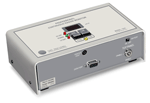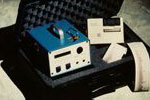Radon Testing
Radon Detectors and Radon Test Kits
Device accuracy is less a question than improper use, interpretation, or insufficient data.
This problem is best addressed by:
|
Midwest Radon: Radon Specialists since 1988
- Continuous Radon Monitors (on site results)
- Technicians individually trained & certified.
- Quality and tamper resistant steps:
- Hourly readings to aid reliable test results.
- Occupant notice of required conditions.
- Occupant protocol compliance' agreement.
|
 |
|
Understanding
Radon Detectors and Radon Test Kits
|
|
Continuous Radon Monitors (active method)
Ideal tool for time sensitive decisions such as during a home sale.
Information provided includes hourly data regarding radon fluctuations, device movement, power outages and other data to enhance an understanding of the test results.
 |


|
|
Electronic radon detectors (homeowner use)
Improved technology in recent years yet consumer beware:
- They usually cannot be calibrated and can suddenly provide incorrect readings.
- Radon detectors that do not provide hourly readings are not approved for radon inspection under time sensitive or home sale testing.
|
Often sold as home owner alerts, sirens, etc. |
|
Radon Test Kits - Short term: (Typically homeowner use.)
Charcoal Canisters, Electrets and other passive devices.
Home test kits are ideal for homeowner when there is time to take a second test in the near future since they are cost effective.
These provide only a single numeric value that represents the average reading for a short-term test period. Normally, they should provide a result that would be similar to that other radon monitors yet without much information to help verify reproducible test conditions or mistakes by the tester, lab or during shipping.
More than one test or test device is always recommended when using passive devices.
|
 |
|
Radon Test Kits - Long term: (Typically homeowner use.)
Alpha Track, Electrets and other passive devices.
These long term test devices provide a single numeric value that represents the average reading for a long-term test period. Their strength is to identify actual exposures regardless of building operation at different times and other factors that fluctuate radon entry into and around the dwelling.
Long term test devices are often deployed for at least 91 days. However, six months to a year is recommended to insure seasonal differences in building operation are included in the measurement. We recommend to use more than one test device with passive devices.
|

|
NOTE: Information provided here is
intended to be simplistic in description.
|